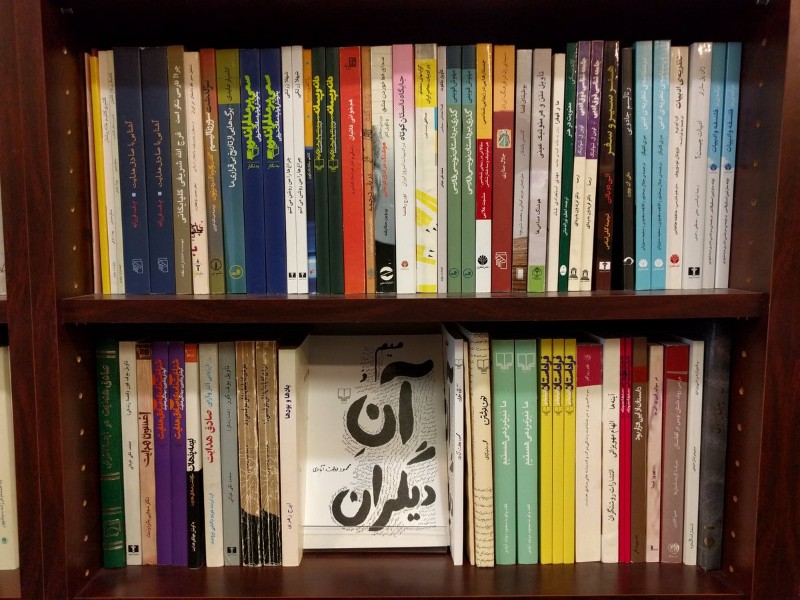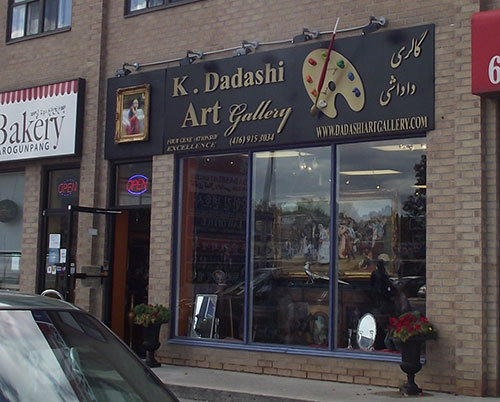Event Category: Education, Training & WorkshopsEvent Tags: #BarrioFolkDance, #CommunityDance, #CrissCrossCurations, #CulturalDance, #CulturalExchange, #CulturalHeritage, #DancePerformance, #DanceWorkshops, #FreeDanceWorkshops, #InclusiveDance, #PersianDance, #RabindraNritya, #TorontoArtists, #TorontoEvents, #TorontoPublicLibrary, #رقص_ایرانی, #رقص_باریو, #رقص_ربندرانات_تاگور, #کارگاه_رایگان_رقص, #کارگاه_رقص, and #کتابخانه_عمومی_تورنتو
- Overview
Independent dance artists Tanveer Alam and Morgyn Aronyk-Schell have joined together to create Criss-Cross Curations, a community engaged platform to share cultural dance practices.
This fall, join us at Toronto Public Library- Flemingdon Park Branch for 3 inspiring dance workshops in the styles of Rabindra Nritya (Bangladesh/India), Barrio Folk Dance (Philippines), and Persian Dance (Iran), as well as a performance showcasing short solos by dance artists Dr. Sanjukta Banerjee, Candace Kumar, and Raha, followed by a moderated artist talkback.
Saturday October 12th / 2:00-3:30pm:
Rabindra Nritya workshop with Dr. Sanjukta Banerjee
Saturday October 19th / 2:00-3:30pm:
Barrio Folk Dance workshop with Candace Kumar
Saturday October 26th / 2:00-3:30pm:
Persian Dance workshop with Raha
Saturday November 2nd / 2:00-3:30pm:
Dance performances by Dr. Sanjukta, Candace and Raha followed by a moderated artist talkback
All 3 workshops and the performance showcase are absolutely free to attend, beginner friendly, drop-in, and open to participants of all ages and abilities. For the workshops, we encourage participants to wear comfortable clothing that you would feel good dancing in and you may choose to participate in bare feet, or wear comfortable shoes.
ASL interpretation will be made available upon request, please email us no later than 3 days before the date of a workshop to make a request for ASL interpretation . If you have accessibility needs that need to be met in order to participate with us, please don’t hesitate to contact us at crisscrosscurations@gmail.com and we will be happy to accomodate your needs.
Complimentary snack and refreshments will be provided at each of the workshops and the performance date.
What to expect at the workshops:
-A welcoming, supportive, and encouraging environment, facilitated by a knowleadgable professional dance artist.
-A 1.5 hour dance workshop where you will be invited to stand up and learn some of the basic movements from each respective dance form.
-An invitation to participate in bare feet, though you may choose to remain in comfortable footwear if you wish.
-A casual environment with opportunities to ask questions, and make requests for modifications to best suit your body.
-A break halfway through to enjoy complimentary snacks and refreshments.
-Professional photo and video documentation for purposes including but not limited to archival, promotional, instructional, or educational purposes.*
What to expect at the performance:
-A casual performance setting with fold-out chairs, music, and overhead lighting.
-3 short solo works performed by Dr. Sanjukta Banerjee, Candace Kumar, and Raha.
-An artist talkback moderated by Criss-Cross Curations Co-Producers Tanveer Alam and Morgyn Aronyk-Schell with an opportunity for audience questions.
-Complimentary snacks and refreshments.
Follow us on instagram @crisscrosscurations to learn more about The DanceShare Series, our artists and what to expect during our upcoming workshops!
*If you do not consent to photography or videography please let us know prior to the start time of the workshop and we will be sure not to capture your image.
Rabindra Nritya workshop with Dr. Sanjukta Banerjee
Saturday October 12th / 2:00-3:30pm
About Dr. Sanjukta Banerjee:
Dr. Sanjukta Banerjee is an accomplished Indian classical dancer, choreographer and educator specializing in Bharatanatyam, Mohiniyattam and Kathakali. She holds a Doctoral degree from Dance Department of York University, Toronto with research interests in gendered bodies and re-enactment of movements in traditional repertoires. Alumni of Kolkata Kalamandalam, Banerjee is an empaneled dancer with Indian television, Eastern Zonal Cultural Center(EZCC), and Sangeet Natak Academy(SNA). She has extensively toured all over India, Middle-East, South-Eastern countries of Asia; Europe, USA and North America.
Sanjukta has gained wide acclaims for her performances of “Durga” on the occasion of Navratri /Mahalaya’s for National Network Indian Television, Doordarshan for ten consecutive years since1994 to 2014.
Artistic director of Saugandhikam Dance Academy, she imparts Bharatanatyam and Mohiniyattam dance lessons in North York, Scarborough and Mississauga. Banerjee also offers online lessons of dance and mentors advance students located in USA and India. She also serves as a curator, mentor, rehearsal director and a guide in the community to articulate issues on how bodies can negotiate aesthetics and technique to establish an interface between practice and performance of dance in Canada.
What to expect in the workshop:
What Tagore envisioned as dance and implementation of that dance to his poetic compositions is what we inquire through this workshop. Here I would be analysing the tools that Tagore envisioned his dancers to gain skill at. The reason and decision of Tagore why he wanted to impart classical dance training at his Educational institute. It is significant to see how an Indian classical dancer is equipped with vocabulary and tools through the pedagogy of any Indian classical dance form, for example, Bharatanatyam. The narrative is about how, what, why movements are constructed to a musical composition of Tagore. The choice of tools from a classical dance pedagogy and the process of dance making will be discussed and reflected and indulged upon.
Some background information on the dance form:
Bharatanatyam, of the oldest dance style from the Asian subcontinent, has evolved and undergone reconstruction number of times, over the past centuries. This Indian Classical dance form originated in the temples from the state of Tamil Nadu, India. It has its inspirations from the sculptures of the ancient temple of Chidambaram.
Additionally, the name Bharatanatyam is considered to be an acronym of:
BHA– Bhava (Expression),
RA– Raga (Music) and
TA– Tala (Rhythm)
NATYAM- Theatrical aspect in dance,
They signify a cohesive combination of all the elements in an embodied art form.Traditionally, the dance was performed by Devadasis (the community of temple dancers in service to God in the ancient temples). The Devadasis were women who dedicated their lives to serving the temple deity as dancers, and their performances were an inherent part of the elaborate temple rituals. Devadasis in these communities had social agency, and were not restricted by the patri-focal kinship. They lived in matrilineal homes, had sexual relationship with esteemed men in the society and were extremely knowledgeable, and had scholarship in ancient texts and philosophy of the land. But with Muslim invasion and British Colonialisation of India, dance and the practitioners were faced with multiple legal restrictions and slowly they were dislodged into secret quarters. It was only in 1930s that social activists along with educationists and philanthropists came forward to revive and reconstruct the traditional practices. They eventually revived the cultural practices from disintegration and reconstructed the dance form to suite the proscenium theatre. Around the 1930’s some surviving Devadasis such as the legendary Balasaraswati were called for stage performances by the elite educated class. Rukmini Devi Arundale was one of the foremost educated lady to learn this dance form. Today this is one of the popularly practiced dance forms in India and has a global reputation.
Barrio Folk Dance workshop with Candace Kumar
Saturday October 19th / 2:00-3:30pm
About Candace Kumar:
Candace Kumar is a cultural dance artist, educator and choreographer based in Toronto. She specializes in Filipino folk dance, practicing diverse styles from across the Philippines. Her work aims to reimagine traditional dance forms from the Canadian diaspora. She believes traditional dance is not an art form of the past but can guide us through the future as we navigate life on land that is not our ancestral home.
Candace is a graduate of the University of Toronto and is currently an instructor, choreographer, and principal dancer for Folklorico Filipino Canada, where she has been training for over 17 years. Candace has worked with Little Pear Garden Dance Company, Nova Dance Company, Creativiva Entertainment, Nautanki Creations, HATAW, A La Una, Han Han and more. Her notable performances include the 2015 Pan Am and Parapan Am Games, Nuit Blanche, SummerWorks Festival, and international festivals in Los Angeles, San Francisco, Mexico, Alaska, and the Czech Republic.
Candace views dance as a community-based practice. Based at the Filipino Centre Toronto located in Agincourt, Scarborough, Candace passionately teaches members of the community Filipino dance and music. In her future work, she hopes to continue contributing to the Filipino dance community and sharing her culture with others!
About the dance form:
Filipino cultural dance is an umbrella term from different styles found across the Philippines, also commonly referred to as Filipino folk dance. Across all regions in the Philippines, dance is deeply connected to the land, the people, the food, textiles and beliefs.
In this workshop, Candace will be sharing Barrio (from Rural Philippines).
Barrio comes from the Philippine countryside, a Spanish word meaning neighbourhood or village, where communities gather after a long day’s work and celebrate through dance. These lively dances reflect rural Philippines’ daily life, customs, and traditions and often portray activities such as farming, fishing, and celebrations.Persian Dance workshop with Raha
Saturday October 26th / 2:00-3:30pm
About Raha:
Raha, an Iranian dancer and choreographer residing in Toronto, draws inspiration from the rich traditions of Persian classical music to create captivating choreography. Her journey into the world of dance and music commenced during her teenage years in Iran, where she was deeply influenced by the lyrical beauty of Iranian culture. Driven by her fervor for dance as a means of self-expression and connection, Raha now graces numerous cultural events, festivals, and celebrations throughout Canada, sharing her profound love for dance and her enchanting choreographic creations.
Raha leads a dance ensemble and collaborates extensively with musicians and artists to participate in festivals and cultural gatherings, enriching the performances with her dance expertise.
About the dance form:
Persian dance, or Iranian dance, is a rich and diverse art form with roots that stretch back thousands of years. It encompasses a wide range of regional styles, each with its own unique movements, rhythms, and cultural significance. The forms I practice include both classical Persian dance and folklore dances like Bandari, Gilaki, Azari and Baloch, which originate from different parts of Iran.
Classical Persian dance is known for its fluidity, grace, and intricate hand and arm movements, often reflecting the poetic and mystical aspects of Persian culture. It emphasizes expressiveness and subtlety, with a focus on conveying emotion and storytelling through delicate gestures and flowing movements.
Regional dances like Bandari and Azari are more energetic and rhythmic, reflecting the cultural and geographical diversity of Iran. Bandari dance, for example, originates from the coastal regions and features lively, rhythmic footwork and hip movements, often performed to upbeat music.
Important elements in Persian dance include the connection between music and movement, the expression of emotions through subtle gestures, and the preservation of cultural stories and traditions. Each dance is not just a performance but a reflection of the history, values, and spirit of the people who created it to showcase their day-to-day aspects of lives.
- Photos
- How to register
- Map
No Records Found
Sorry, no records were found. Please adjust your search criteria and try again.
Google Map Not Loaded
Sorry, unable to load Google Maps API.
- Reviews
- Place
- Organizer
-
Venue or Place: Orkid Gallery CollectionAddress: 250 Sheppard Ave E Toronto Ontario M2N 6M9April 1, 2025, 5:00 pm-6:00 pmOrganizer: Orkid Gallery🔹 ورکشاپ خوشنویسی ایرانی 🔹 📍 مکان: 250 Sheppard Avenue East 📅 تاریخ: هر سهشنبه ⏰ زمان: 17:00 تا 18:00 معرفی ورکشاپ: در این ورکشاپ، شما را به دنیای پر رمز و راز خوشنویسی ایرانی دعوت میکنیم. این Read more...
-
Venue or Place: North York Central LibraryAddress: Toronto Toronto Ontario M7Y 2K7April 26, 2025, 2:00 pm-4:00 pmOrganizer: PERSIAN ELITE PROFESSIONALSThis exclusive networking event is tailored specifically for professionals in Development and Construction Industry. Doors at 1:30pm Refund Policy No Refunds Agenda 1:30 PM – 2:00 PM Registrations & Informal Networking 2:00 Read more...
-
Venue or Place: Orkid Gallery CollectionAddress: 250 Sheppard Ave E Toronto Ontario M2N 6M9April 11, 2025, 6:00 pm-9:00 pmOrganizer: Orkid Galleryآیا تا به حال لذت خلق هنر با دستان خود را تجربه کردهاید؟ لمس گل و تبدیل آن به یک اثر زیبا، حسی از آرامش و خلاقیت را به همراه Read more...
-
Venue or Place: YOGA BY SHIVAAddress: Toronto Toronto Ontario M5W 5M3March 31, 2025, 7:45 pm-9:00 pmOrganizer: Masoud Mahdaviدوستان عزیز و همراهان مسیر رشد و تحول با خوشحالی اعلام میکنیم که اولین جلسه از نشستهای دورهای با عنوان “جلسات پویش” در تاریخ ٣١ مارچ ٢٠٢۵ از ساعت ۷:۴۵ Read more...








